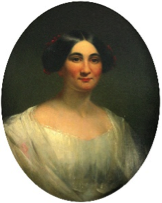 Phoebe and her sister Alice were 19th century American poets who grew up writing together, Alice being the older by four years. They initially published their poetry jointly before eventually producing separate bodies of work once both names were established amongst the American literati. It has been suggested by many critics that Phoebe was a more able poet than her sister although both were very competent writers.
Phoebe and her sister Alice were 19th century American poets who grew up writing together, Alice being the older by four years. They initially published their poetry jointly before eventually producing separate bodies of work once both names were established amongst the American literati. It has been suggested by many critics that Phoebe was a more able poet than her sister although both were very competent writers.
Phoebe was born in September 1824 in the quirkily named Mount Healthy, Ohio. She was raised on Clovernook Farm in what was known as a “Universalist” household. Her childhood was happy until her mother died in 1835 and her father remarried shortly afterwards. Unfortunately their step mother was more concerned with getting as much farm labouring work out of Phoebe and her sister as possible, even at the expense of their schooling. The girls had to make do with occasional days at school and home teaching, often courtesy of an older sister who stimulated their interest in reading classic literature. Despite often being tired they were determined to carry on writing poetry, although the only time available for that was usually at the very end of a day of hard labour. Cruelly they were denied candles to aid their writing and had to improvise with a container of lard and a rag for a wick.
Somehow they survived this ordeal and went on to jointly publish their work in 1848, and again in 1849. A man named Rufus Wilmot Griswold was putting together a poetry anthology called Female Poets of America and included work by the Cary sisters. Following this he assisted the girls to publish their own Poems of Alice and Phoebe Cary. The majority of the poems in their joint efforts could probably be attributed to Alice but it was generally acknowledged that Phoebe’s was the more accomplished work.
By now their poetry was becoming reasonably well known and the poet John Greenleaf Whittier had been invited to write the preface for the latter book. He refused though on the grounds that he did not think the work NEEDED his endorsement, so it was clear that he held their work in high regard. Other established writers, such as Edgar Allan Poe, soon made known their admiration for the work of the Cary sisters.
They moved to New York soon after and quickly became established amongst the elite of the city’s artistic and literature set. They held meetings at their own “salon” on Sunday nights, inviting artists and writers to come and exchange their views. Phoebe had always had an interest in women’s rights and, in addition to writing articles for a number of national publications, she assisted Susan B. Anthony with her newspaper The Radical, acting as assistant editor for a time. Phoebe produced at least two collections under her own name; in 1854 she published Poems and Parodies and then, in 1867, Poems of Faith, Hope, and Love.
Here is a short example of her work which is very much of its time and, it is probably fair to say, such sentiments would probably be derided by women today. It is called When Lovely Woman:

Perhaps it was a legacy of their harsh upbringing on the farm, allied to years of over work as adults, but both sisters were to suffer early deaths in the same year. Alice died first having contracted tuberculosis and Phoebe, consumed with grief, died only five months later, although the medical cause was hepatitis.
Phoebe Cary died on the 31st July 1871, aged 46.

